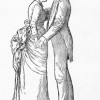
Cheryl A. Wilson, “The Arrival of the Waltz in England, 1812”
The arrival of the waltz in England changed both the experience of participating in the ballroom and the cultural impact of Victorian social dance.

Anna Maria Jones, “On the Publication of Dark Blue, 1871-73″
Dark Blue (1871–73) was a monthly magazine, edited by Oxford undergraduate John Christian Freund, which folded two years after a brilliant debut. During its brief run, it brought together a stunning list of literary and artistic contributors, including Dante Gabriel Rossetti, A. C. Swinburne, William Morris, Andrew Lang, Mathilde Blind, Sheridan Le Fanu, Simeon Solomon, and Ford Madox Brown, who produced aesthetically and sexually daring poetry, art, and criticism. However, it also strove to “appeal to the whole English-speaking public,” as Freund put it, and, thus, included much that might be described as middlebrow, even conservative. Whereas individual texts from Dark Blue, such as Le Fanu’s Carmilla, have received considerable attention, scholars have devoted very little sustained attention to the journal beyond noting its importance as an “artifact” in the history of the Pre-Raphaelite Movement and British aestheticism, and registering puzzlement at the journal’s eclecticism. This essay returns to Dark Blue to uncover common threads among dissimilar writers and artists. With particular attention to the journal’s commitments to transnationalism, I trace three intertwined threads—synesthesia, translation, and sexual dissidence—as they manifest in key texts by Swinburne, Solomon, Le Fanu, and others. Reading these texts in their original context not only demonstrates Dark Blue’s importance to early formations of aestheticism but also helps us to see how aestheticism connects with, rather than stands in opposition to, mid-Victorian culture.

Meaghan Clarke, “1894: The Year of the New Woman Art Critic”
In 1894, satirical journals such as Punch mockingly identified the phenomenon of the New Woman, as found in novels, plays and articles, as an intellectual and independent figure. These mannish representations of professional women seem impossible to reconcile with the aesthetic and fashionable realms of late Victorian art and culture. Studies have frequently considered the role of Victorian women as models or sitters—objects of a male artist’s inspiration. However, other career paths for women were possible. Many women were successful artists and an alternative entrée into the art world was journalism. This article will posit that women art journalists provided a living example of professional opportunities for intellectual New Women. Although their work has been largely left out of accounts of the period, they contributed to key developments in art history at the end of the century. To begin with, I will touch on the history of art writing and its development as a professional avenue for women. Then, I will explore specific themes in order to consider the diversity of their critical responses to contemporary British art circa 1894. This will encompass women’s writings on Pre-Raphaelite and academic artists as “celebrities,” groups influenced by French Impressionism in Newlyn and St. Ives, London Impressionists and Glasgow Boys, as well as art and culture beyond Britain.
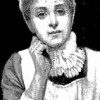
Arlene Young, “The Rise of the Victorian Working Lady: The New-Style Nurse and the Typewriter, 1840-1900”
The increasing demographic imbalance between men and women in Britain in the nineteenth century forced many women and girls from the middle classes to seek employment to maintain themselves because, in the words of one commentator, “there were not enough husbands to go round.” Working for pay, however, was considered déclassé and the employments that emerged as two of the most popular for middle-class women, nursing and typewriting, had to overcome cultural resistance.

Deborah Epstein Nord, “On Augustus Egg’s Triptych, May 1858”
These three paintings representing the decline of a family as the result of the wife’s presumed infidelity cannot be read in strictly linear fashion, as if they followed the narrative structure of serial fiction. Rather, a reading of the painting that takes into account the spatial and iconographic relationship between the three panels yields the complex and open-ended meaning of the triptych’s story.
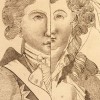
Ellen Malenas Ledoux, “Florizel and Perdita Affair, 1779-80”
This article examines the cultural and political significance of the Prince of Wales’s early 1780s involvement with Drury Lane actress and poet Mary Robinson. Rather than just a romance between two public figures, the “Florizel and Perdita Affair” had wide-ranging effects that, when examined, offer meaningful insight into everything from the weakening influence of the Hanover dynasty and the campaigns of Whig opposition candidates to the aesthetics of formal portraiture, political cartoons, and popular fashion.

Lorraine Janzen Kooistra, “The Moxon Tennyson as Textual Event: 1857, Wood Engraving, and Visual Culture”
By convention the launch of the so-called “golden age” of wood-engraved illustration in Britain, also known as “the sixties,” is Edward Moxon’s publication, in May 1857, of Alfred Tennyson’s Poems, with 54 wood-engraved illustrations designed by 8 artists, including the Pre-Raphaelites John Everett Millais, William Holman Hunt, and Dante Gabriel Rossetti. Although the Moxon Tennyson was neither a commercial nor critical success on first publication, before the decade was out its Pre-Raphaelite designs were considered a touchstone for artistic illustration, a reputation that continues today. Without disputing the significance of this aesthetic achievement, I want to shift critical focus to the Moxon Tennyson’s status as mass-produced work of art in the age of mechanical reproduction. My interest here is in how its visual communication was expressed through its reproductive technology at the historical moment of its production and reception. This essay re-positions the Moxon Tennyson as a textual event by reading it in the context of documentary, satiric, and artistic wood-engraved images selected from the crucial six-month period after its publication. By situating the Pre-Raphaelite illustrations for Tennyson’s Poems in relation to representations in the public press of such disparate events as the Art Treasures of the United Kingdom Exhibition in Manchester, the reportage on Indian uprisings at Meerut and Cawnpore, the Matrimonial Causes Act, and the Christy Minstrels show in London, I aim to show the complex ways in which the Moxon Tennyson was a worldly event, caught up in, and contributing to, ways of seeing and knowing in 1857.
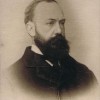
Mary Jean Corbett, “On Crawford v. Crawford and Dilke, 1886″
Crawford v. Crawford and Dilke was among the first Victorian divorce cases to involve a well-known English politician. It achieved scandalous status in its own time for both its lurid sexual details and its high-profile cast of characters. Focusing less on the chief male actors than its female participants, including Maye Dilke and Virginia Crawford, I consider the response by contemporary feminists to Sir Charles Dilke’s fall from power, as a consequence of his perceived transgressions, and some implications of the scandal for feminist politics in the 1880s and 1890s.
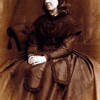
Janice Schroeder, “On the English Woman’s Journal, 1858-64″
The English Woman’s Journal (EWJ), published between 1858 and 1864, was the first monthly magazine to be published by an organized feminist network in England. From month to month, the EWJ featured a mix of articles on women’s employment, education, and volunteering, notable women in history, poetry, reviews, current events, and a readers’ column. Staffed by women with primarily female contributors, the magazine embodied the principles and opportunities for women it promoted. That is, in a rapidly changing industrial landscape, women needed new and better avenues of remunerative, meaningful employment, and the education and training required to succeed in the workforce. Marriage and motherhood—the domestic ideal—was not a guarantee of women’s economic or emotional well-being. Working with a meager budget, the circle of feminist activists—the Langham Place Group—who owned and ran the EWJ, saw their magazine as a space to promote and publicize the work they and other women were already doing. They experienced both the thrill and the shock of seeing their magazine, and themselves, noticed in the mainstream, male-dominated press. By 1862 the magazine had run into serious financial straits and many of the members of the network had either moved on to new projects or retired from public work. While maintaining a small subscription base throughout its six-year run, the appearance of the English Woman’s Journal in mid nineteenth-century England nevertheless signaled a new departure in feminist writing, women’s journalism, and attitudes towards women’s employment.

Kelly Hager, “Chipping Away at Coverture: The Matrimonial Causes Act of 1857”
The Matrimonial Causes Act of 1857 made divorce legal under British law and was the first law to protect a wife’s property. It was thus the second piece of legislation (after the 1839 Custody of Infants Act) to require Parliament to examine the ramifications of the common law doctrine of coverture; the passage of these two acts began to chip away at that cruel precedent. While the bill originally introduced in 1854 was procedural in nature—designed to remedy the anomaly of a legal system that granted divorces by Private Act of Parliament though divorce was, strictly speaking, illegal—by the time it became law, three years later, the public debate over the rights of married women had become so heated that the final version of the bill not only put divorce on the books and made it straightforwardly and absolutely legal, but also provided for the protection of divorced, separated, and deserted wives.
